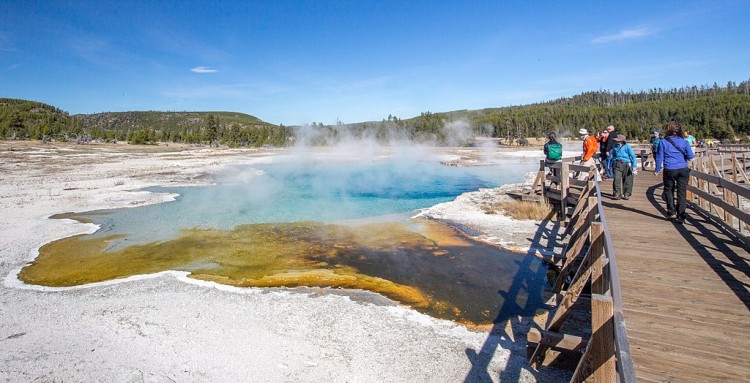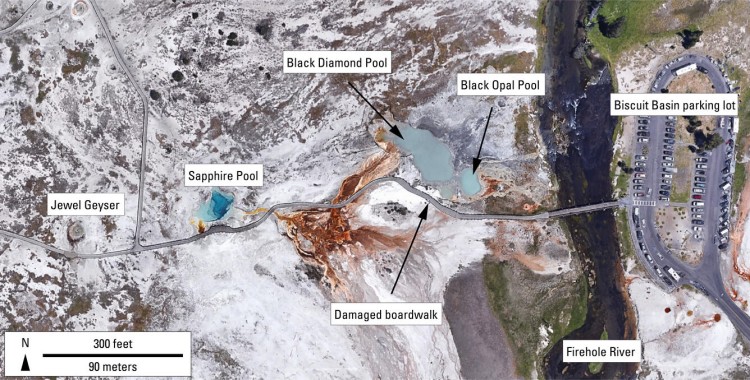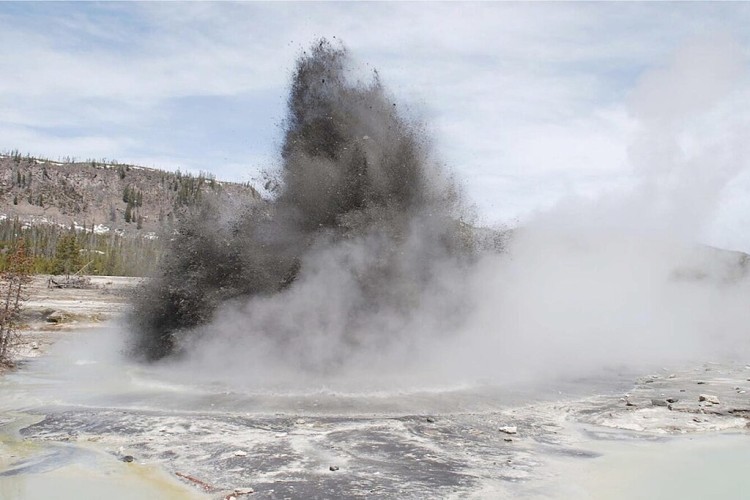A Fiery Surprise: The Recent Hydrothermal Explosion at Biscuit Basin, Yellowstone

Yellowstone National Park, a land of geothermal wonders, has once again reminded us of its untamed nature. On July 23, 2024, visitors to Biscuit Basin witnessed a dramatic event—a hydrothermal explosion from Black Diamond Pool that left the area altered and offered a stark reminder of the volatile forces beneath the park's surface.
The Heart of Yellowstone's Geothermal Activity
Biscuit Basin, known for its picturesque hot springs, geysers, and unique thermal features, is part of the Upper Geyser Basin, one of the most thermally active areas in Yellowstone. Named for the biscuit-shaped sinter deposits formed by past eruptions of Sapphire Pool, the basin attracts countless visitors each year eager to witness its boiling hot springs and erupting geysers.
The Explosion: What Happened?
The recent hydrothermal explosion occurred without warning, sending a plume of steam and debris high into the air. Videos posted to social media showed water and rock fragments rocketing 400-600 feet (120-180 meters) into the sky, based on analysis of photos. The Biscuit Basin boardwalk was heavily damaged by the explosion, but thankfully no people were injured – a truly amazing thing considering some boulders in the debris pile measure several feet across and weigh hundreds of pounds! There is now a sizeable crater in the basin and the entire area is closed to visitors while geologists monitor the site and park officials clean up the debris and rebuild the boardwalk.

Image source: USGS
Understanding Hydrothermal Explosions
Hydrothermal explosions, while rare, are one of the most dangerous events that can occur in Yellowstone National Park. They happen when underground water, superheated by magma, suddenly flashes to steam, causing a violent release of pressure. They serve as powerful reminders of the geothermal energy lurking beneath Yellowstone. These events differ from volcanic eruptions in that they do not involve magma reaching the surface. Instead, they are driven by the rapid conversion of water to steam. When the pressure becomes too great, the steam forces its way to the surface, causing an explosion. The key difference here between regular geyser eruptions and hydrothermal explosions is that, in an explosion, the liquid-steam mixture exists within a confined space that has become sealed, so the mixture has no regular, easy way to reach the surface. As the steam expands, the pressure increases and eventually overcomes the strength of the rock, triggering an explosion.
In Yellowstone, these explosions can occur with little to no warning, making them extremely difficult to monitor.
The Aftermath and Ongoing Research
In the wake of the explosion, park geologists and researchers have been closely monitoring the site. Initial assessments indicate that the explosion did not significantly alter the broader geothermal system but did create new hazards in the immediate vicinity. The park has temporarily closed off the affected area to ensure visitor safety and to allow scientists to study the changes.
Researchers are particularly interested in understanding what triggered this explosion. They are analyzing rock samples, studying temperature and gas emissions, and using ground-penetrating radar to map underground features. This data will help improve predictive models and enhance our understanding of hydrothermal systems, not only in Yellowstone but in similar geothermal areas worldwide.
A Reminder of Nature's Power
Events like the Biscuit Basin explosion serve as powerful reminders of the dynamic and unpredictable nature of Yellowstone. While the park's geothermal features attract millions of visitors each year, they also pose inherent risks. Park authorities emphasize the importance of adhering to safety guidelines, staying on designated trails, and respecting closures.
Yellowstone's geothermal activity is a testament to the powerful forces shaping our planet. As we marvel at its beauty, we must also respect its potential for sudden, dramatic change. The recent explosion at Biscuit Basin is a vivid illustration of this balance, highlighting both the park's allure and its inherent dangers.

Image from the 2009 Biscuit Basin explosion. Source: Public Domain
Visiting Yellowstone Safely
For those planning to visit Yellowstone, it's crucial to stay informed about current conditions and safety advisories. The National Park Service provides up-to-date information on its website, and park rangers are always available to answer questions and offer guidance.
Yellowstone remains a place of wonder and discovery, where the Earth’s geothermal activity is on full display. The Biscuit Basin explosion adds a new chapter to its storied history, reminding us that even in the heart of such beauty, nature's power is ever-present and ever-changing.
By staying informed and respectful of Yellowstone's geothermal features, visitors can safely enjoy the park's unique wonders while appreciating the powerful forces at work beneath the surface.













